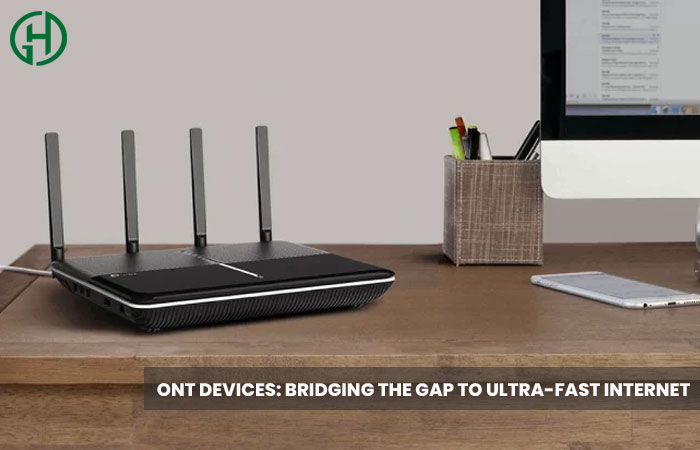ONT Devices: Bridging the Gap to Ultra-Fast Internet

In today's hyper-connected world, high-speed internet is no longer a luxury—it's a necessity. From remote work and video streaming to online gaming and smart home automation, our digital lifestyles demand reliable and ultra-fast broadband. At the heart of this revolution lies a crucial component often overlooked by consumers: the
ONT device.
What is an ONT Device?
An Optical Network Terminal (ONT) is a device that connects your home or business to a fiber optic internet service. It's a key component in FTTH (Fiber to the Home) infrastructure. The ONT converts the optical signals transmitted through fiber optic cables into electrical signals that your router and devices can use.
Think of the ONT as the gateway between the lightning-fast world of fiber optics and the digital devices you use every day.
How ONT Devices Work
When your internet service provider (ISP) brings fiber directly to your premises, the ONT is installed at the termination point of the fiber cable—usually near where the service enters your home. From there, the ONT connects to a router via Ethernet, enabling wireless or wired internet access throughout your home.
In most cases, the ONT includes:
Optical port: Connects to the incoming fiber optic cable
Ethernet ports: Interface with your home router
Power supply: Powers the device
Indicator LEDs: Show status and connectivity
Some modern ONTs also include integrated Wi-Fi or VoIP ports for fiber phone services.
Benefits of ONT Devices in Fiber Internet
1. Unmatched Speed and Bandwidth
Fiber optic networks powered by ONT devices can easily support Gigabit internet speeds and beyond. Whether you're streaming 4K content, participating in Zoom meetings, or uploading large files, ONTs ensure your internet connection is fast and consistent.
2. Low Latency and High Reliability
Because ONTs convert light signals directly at your location, there's minimal signal loss and reduced latency. This makes ONT-based internet ideal for online gaming, video conferencing, and real-time cloud applications.
3. Future-Proof Connectivity
ONTs are designed to handle increasing bandwidth demands, making them essential for smart homes, IoT devices, and future innovations in broadband technology.
Choosing the Right ONT Device
While ISPs usually provide ONTs as part of their service, understanding their capabilities can help you make informed decisions. Look for ONTs that support:
GPON or XGS-PON standards for higher performance
Multiple Ethernet ports for direct device connections
Built-in Wi-Fi or VoIP support, if needed
Always ensure compatibility with your provider’s fiber network to avoid connectivity issues.
The Future of ONTs and Fiber Broadband
As the world shifts toward full-fiber networks, ONT devices will play an increasingly critical role. Governments and ISPs worldwide are investing heavily in fiber rollouts, making high-speed broadband access more widespread than ever.
In the near future, we can expect ONTs with:
Integrated AI for network optimization
Mesh Wi-Fi support
Enhanced cybersecurity features
Support for 10G internet speeds
Final Thoughts
ONT devices may be small, but their impact on your internet experience is massive. They are the unsung heroes that enable ultra-fast, reliable, and future-proof connections directly to your home or business.
As demand for gigabit-speed internet continues to grow, understanding and appreciating the role of
ONT devices can help you make the most of your fiber optic internet investment.